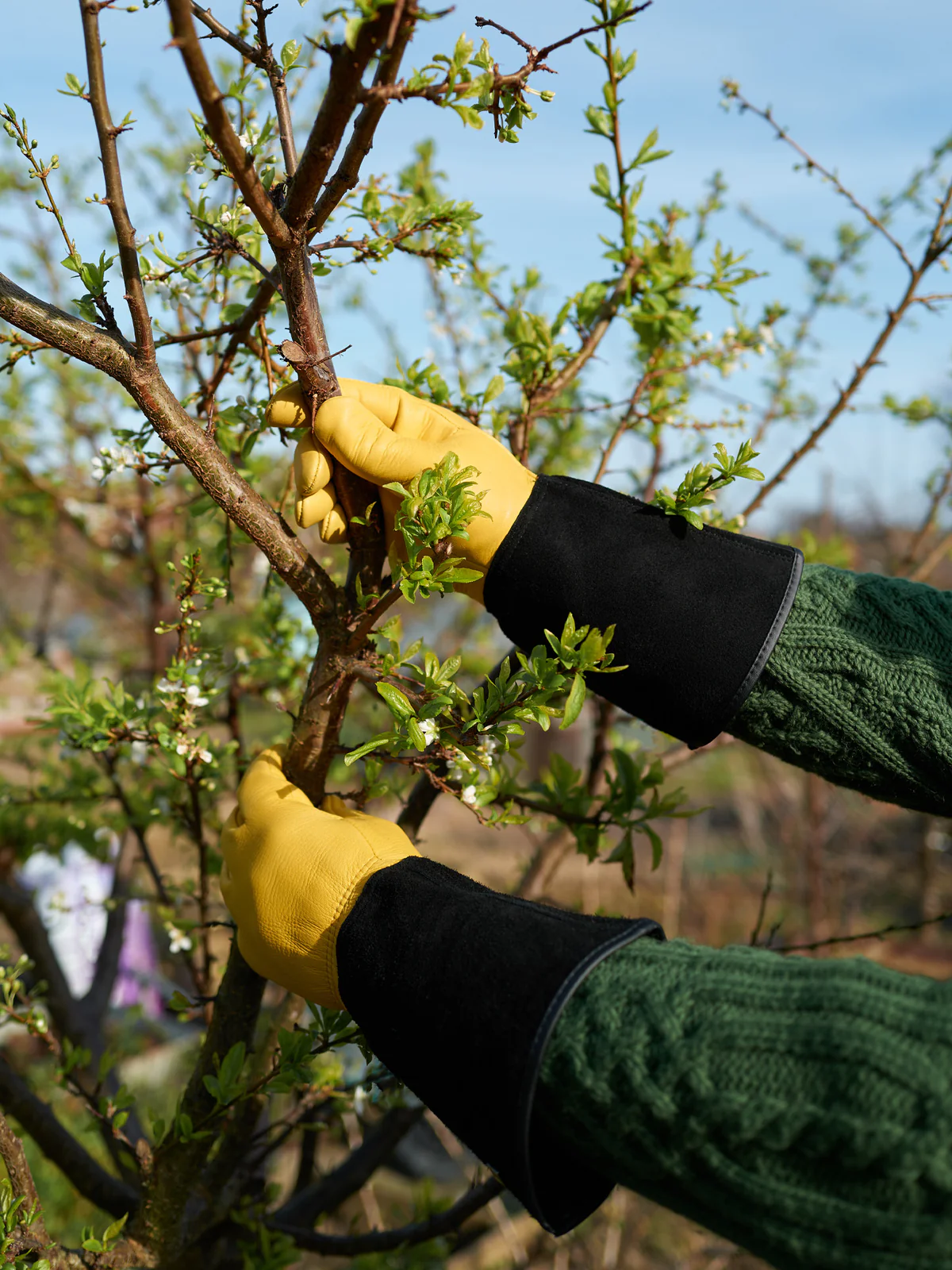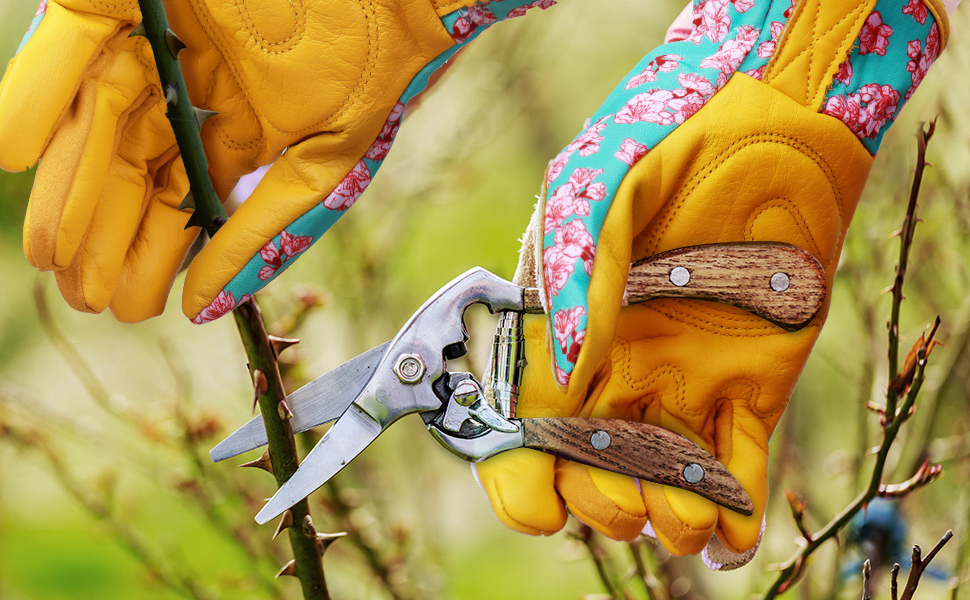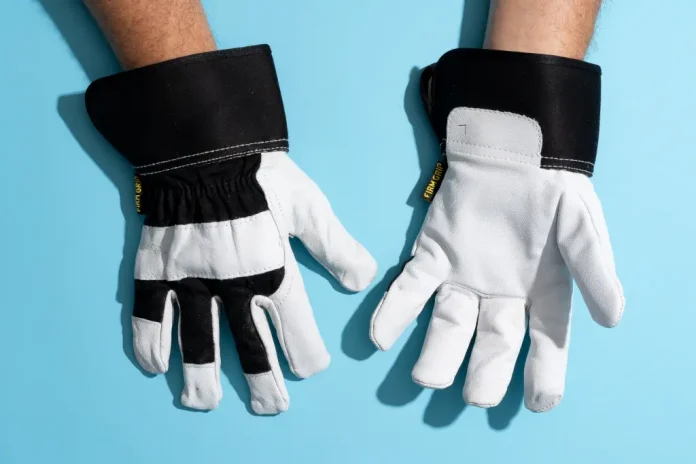Introduction
Gardening is a beloved pastime for many, but it comes with its fair share of challenges—one of which is dealing with thorns. A good pair of gardening gloves can make all the difference, especially if they’re made of leather. Leather gardening gloves offer a combination of durability, comfort, and protection that’s hard to beat. In this guide, we’ll dive into why leather gloves are a top choice for gardeners, particularly when it comes to thorn protection.
Benefits of best Leather Gardening Gloves

Durability
Leather is known for its long-lasting nature. Unlike fabric or synthetic gloves, leather can withstand the rigors of gardening, including exposure to dirt, moisture, and rough surfaces. This durability means you won’t have to replace your gloves as often, saving you money in the long run.
Comfort
Leather gloves often mold to the shape of your hands over time, providing a custom fit that enhances comfort. The natural material breathes better than synthetic alternatives, reducing sweat and improving overall wearability during long gardening sessions.
Protection
One of the main reasons gardeners opt for leather gloves is the superior protection they offer. Leather is tough enough to resist punctures from thorns, sharp branches, and other garden hazards. This makes them an excellent choice for working with roses, blackberry bushes, and other prickly plants.
Flexibility
While leather is robust, it also offers a good degree of flexibility. This flexibility allows for a range of motion that is essential when performing detailed gardening tasks like planting seeds, weeding, or pruning.
Types of Leather Used in Gardening Gloves
Cowhide
Cowhide is one of the most common types of leather used in gardening gloves. It’s thick and durable, providing excellent protection and longevity. These gloves are ideal for heavy-duty tasks.
Goatskin
Goatskin leather is softer and more flexible than cowhide, offering superior dexterity. It’s also naturally water-resistant, making it a great choice for gardening in damp conditions.
Pigskin
Pigskin gloves are known for their breathability and softness. They are a bit more affordable than other leather types and still provide decent durability and protection.
Deerskin
Deerskin is incredibly soft and comfortable, molding to the hands like a second skin. While not as durable as cowhide, deerskin offers excellent dexterity and comfort, suitable for less demanding tasks.
Top Features to Look for in Leather Gardening Gloves
Thorn Resistance
When dealing with thorns, the primary feature to look for is thorn resistance. This typically involves thicker leather and additional reinforcements in key areas like the fingertips and palms.
Breathability
Good ventilation is essential to keep your hands comfortable and dry. Look for gloves with breathable designs or perforations that allow air circulation without compromising protection.
Fit and Comfort
A snug fit ensures that the gloves are comfortable and effective. Gloves that are too loose can cause blisters, while too tight gloves can restrict movement. Look for adjustable wrist closures to help achieve the perfect fit.
Dexterity
best leather gardening gloves require precise movements. Gloves that offer good dexterity allow you to handle small tools, seeds, and plants with ease. Softer leathers like goatskin or deerskin typically provide better dexterity.
Reinforcement in Key Areas
Reinforced fingertips, palms, and knuckles can extend the life of your gloves and provide extra protection against thorns and rough surfaces.
Best Leather Gardening Gloves for Thorn Protection

Brand A: Ultra Protection Thorn-Resistant Gloves
Key Features:
- Made from thick cowhide
- Reinforced palm and fingertips
- Adjustable wrist closure
- Breathable design
Pros:
- Superior thorn protection
- Durable and long-lasting
- Good fit for various hand sizes
Cons:
- Can be stiff initially
- Higher price point
Brand B: Premium Goatskin Gloves
Key Features:
- Soft and flexible goatskin leather
- Water-resistant
- Reinforced thumb and palm
- Snug fit with adjustable wrist strap
Pros:
- Excellent dexterity and comfort
- Great for wet conditions
- Lightweight
Cons:
- Less durable than cowhide
- Moderate thorn resistance
Brand C: Heavy-Duty Cowhide Gloves
Key Features:
- Thick cowhide leather
- Double-stitched seams
- Extra padding on palms
- Elastic wrist band
Pros:
- Highly durable
- Superior protection
- Long lifespan
Cons:
- Can be bulky
- Limited breathability
How to Choose the Right Leather Gardening Gloves for You
Assessing Your Gardening Needs
Consider the types of tasks you perform most often in your garden. If you frequently handle thorny plants, thorn resistance should be a top priority. For detailed tasks, prioritize dexterity and comfort.
Considering Glove Features
Think about the features that matter most to you. Do you need highly breathable gloves? Or perhaps ones that offer the best protection possible? Make a list of must-have features to narrow down your options.
Budget Considerations
best gardening gloves for thorns can range from affordable to quite expensive. Determine your budget beforehand, but remember that investing in a quality pair can save you money over time due to their durability.
Care and Maintenance of Leather Gardening Gloves
Cleaning Tips
Regularly clean your gloves by wiping them with a damp cloth. Avoid using harsh chemicals that can damage the leather. For a deeper clean, use a mild soap and water solution, then allow them to air dry.
Storage Advice
Store your leather gloves in a cool, dry place away from direct sunlight. Avoid folding them to prevent creases that can weaken the leather over time.
Repairing Minor Damages
Small tears and holes can often be repaired with a leather patch kit. For more significant damage, consider taking them to a professional for repair.
Alternative Materials for Gardening Gloves
Synthetic Options
Synthetic gloves, often made from materials like nylon or polyester, offer excellent flexibility and breathability. They can be a good choice for gardeners with allergies to leather.
Comparison with Leather Gloves
While synthetic gloves can be cheaper and more flexible, they generally don’t offer the same durability or protection as leather gloves. However, they can be a good backup option for lighter gardening tasks.

Conclusion
Choosing the right gardening gloves can significantly impact your gardening experience. Leather gloves, particularly those designed for thorn protection, offer unmatched durability, comfort, and safety. By considering your specific needs and the features that matter most to you, you can find the perfect pair of leather gardening gloves to keep your hands safe and comfortable.
FAQs
How do I know if leather gardening gloves fit properly?
Your gloves should fit snugly without being too tight. There should be enough room to wiggle your fingers comfortably, but not so much that the gloves slip off easily.
Are leather gardening gloves suitable for all types of gardening?
While leather gloves are excellent for thorny plants and heavy-duty tasks, they might be overkill for lighter gardening tasks. Consider having different gloves for different jobs.
How often should I clean my leather gardening gloves?
Regular cleaning after each use is recommended to remove dirt and sweat. A deeper clean can be done every few weeks or as needed.
Can leather gardening gloves be used in wet conditions?
Some types of leather, like goatskin, are naturally water-resistant. However, excessive moisture can damage leather over time. It’s best to use water-resistant gloves for wet conditions.
What should I do if my leather gardening gloves get wet?
Let your gloves air dry naturally away from direct heat sources if your gloves get wet. Apply a leather conditioner once dry to restore their suppleness.








